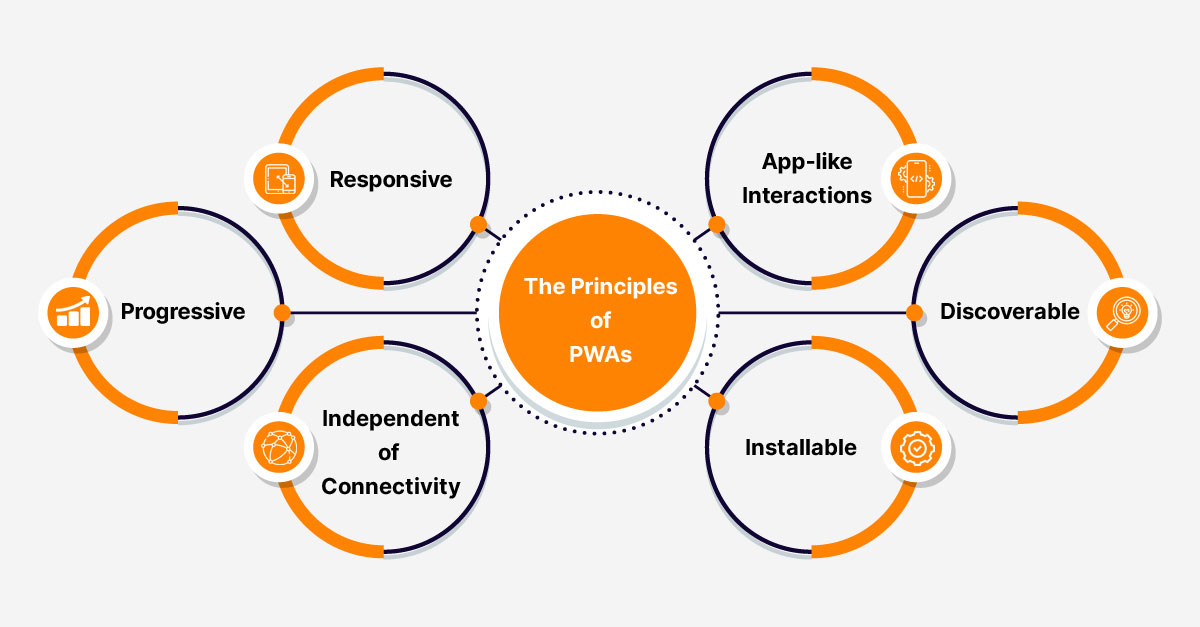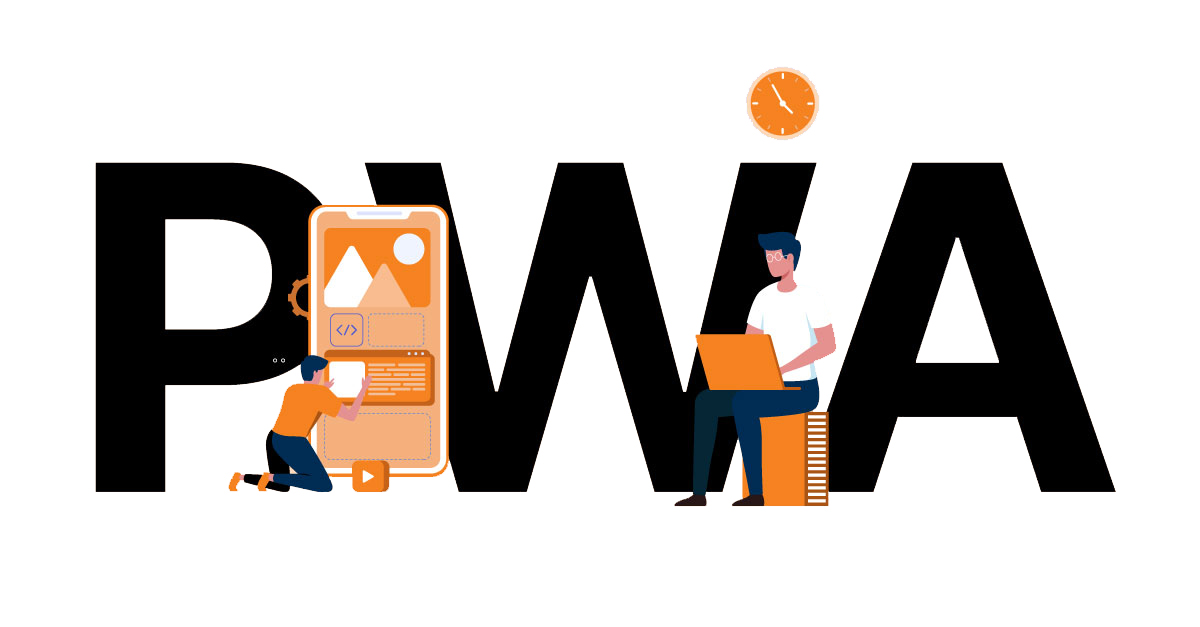Over the recent years, websites and web app development have witnessed several changes. Dating back to the early 2000s, the web pages we more similar to newspaper articles and entries identical to an encyclopedia, but they transformed into excellent blogs and e-commerce websites.
With the advent of mobile apps and smartphones, users started moving towards apps, owing to the better features and enhanced user engagement.
But now is the era of progressive web apps! We have listed all the reasons to help you understand why PWAs are such a rage now.
So, keep with us and start reading the blog!
What are Progressive Web Apps?
Progressive web apps are web applications or pages similar to native mobile applications. These web apps utilize the features of web browsers and add advanced enhancement strategies that provide an experience similar to native apps.
As per Google, Progressive Web Applications are:
- Reliable: PWAs should work without an active internet connection and show the user the graphic interface.
- Immediate Response Time: Users should get an instantaneous response to their actions.
- Engaging: The PWAs provide experiences in line with the native apps. Users can easily install them on their devices, show custom icons, and use device capabilities.
Now that we have understood the definition of progressive web apps let’s quickly look at the same principles!
Is PWA the right choice for you?
Before starting the PWA development, you must decide if you need a PWA. To know if PWA is the right choice for you or not, here are four simple questions which you need to look answer;
- Do you have any ready-made developments? Do you have an already built native app?
- Are you focusing only on mobile devices? No desktop or web platforms?
- Are you reluctant to let users access the app via a web browser?
- Do you need advanced mobile device features?
If the answer to most of your questions is “Yes,” then you probably don’t need progressive web apps.
But if you are finding yourself in denial of most of these questions, you should keep reading about how to build the right PWAs for you;
What are the technical components of PWA?
To differentiate between PWAs and Web apps, some essential components have transformed the performance of web apps.
These components are specific & important to PWAs:
1. Service Worker
This is the most powerful technology behind the working of progressive web apps. Facilitating the offline capability and resource caching of the apps, service workers are the heart and soul of PWAs. Web developers can quickly build fast web pages and offline interactions with service workers.
2. Web App Manifest
The web app manifest serves the function of defining resources that your app needs. This includes icons, the display name of your app, background color, and other necessary details to transform a website into PWA.
The JSON file controls the appearance of your apps and ensures that PWAs are discoverable.
3. Secure Protocol HTTPS
Since service workers intercept all the network requests on the consumer side, the PWAs require a secure protocol. The web application should be built over a secure network. Most features related to PWA, such as geolocation and service workers, are available only once the app has loaded using these protocols.
The Principles of Progressive Web Apps (PWAs)

From what we have understood in the previous section, one reason for which users are attracted to progressive web apps (PWAs) is for the user experience they provide with added functionalities of web platforms.
Apart from this, the following principles also provide an overview of why PWAs are the rising star of the decade:
1. Progressive
Progressive web apps should operate irrespective of the device and operating system. These apps enhance progressively by taking advantage of features available on the user’s device and browser. The gradual improvement method is the basic principle of how a progressive web app operates.
2. Responsive
The progressive web app UI must be responsive and operate smoothly on any screen size and form factor. A progressive web app looks good regardless of the device and has a near-native look and feel.
3. Independent of Connectivity
Independent of the connectivity, a PWA is enhanced with service workers that allow it to run offline.
4. App-like Interactions
A progressive web app is very much similar to a native app. These apps are built on a shell model, significantly reducing page refreshes.
5. Accessibility
Whenever fresh content is published on the app, it becomes accessible to the user when connected to the internet. PWAs are always up-to-date, owing to service workers’ processes.
6. Discoverable
The PWA website is identifiable by search engines due to the W3C manifests and service worker scope registration. This has a significant advantage over native apps.
7. Installable
A progressive web app can be easily installed on the device’s home screen, making it readily available and accessible.
Moving Forward
Consumers are increasingly becoming increasingly dependent on mobile apps for daily activities. This transition from computers to mobile devices occurred quicker than anticipated.
Since mobile apps have been on the road for a long time and have hit their shelf-life, we need to re-think the entire product development scenario and shift towards more robust and consumer-centric apps.
Build the right team, hire the best developers & make your apps seen with dedicated staff augmentation services. Connect with us today!
Summary
Kickstart Your Project With Us!
Blog
Popular Posts
CONTACT US
Let's Build Your Agile Team.
Experience Netsmartz for 40 hours - No Cost, No Obligation.
Connect With Us Today!
Please fill out the form or send us an email to
 Don't Miss Out:
Don't Miss Out: 







